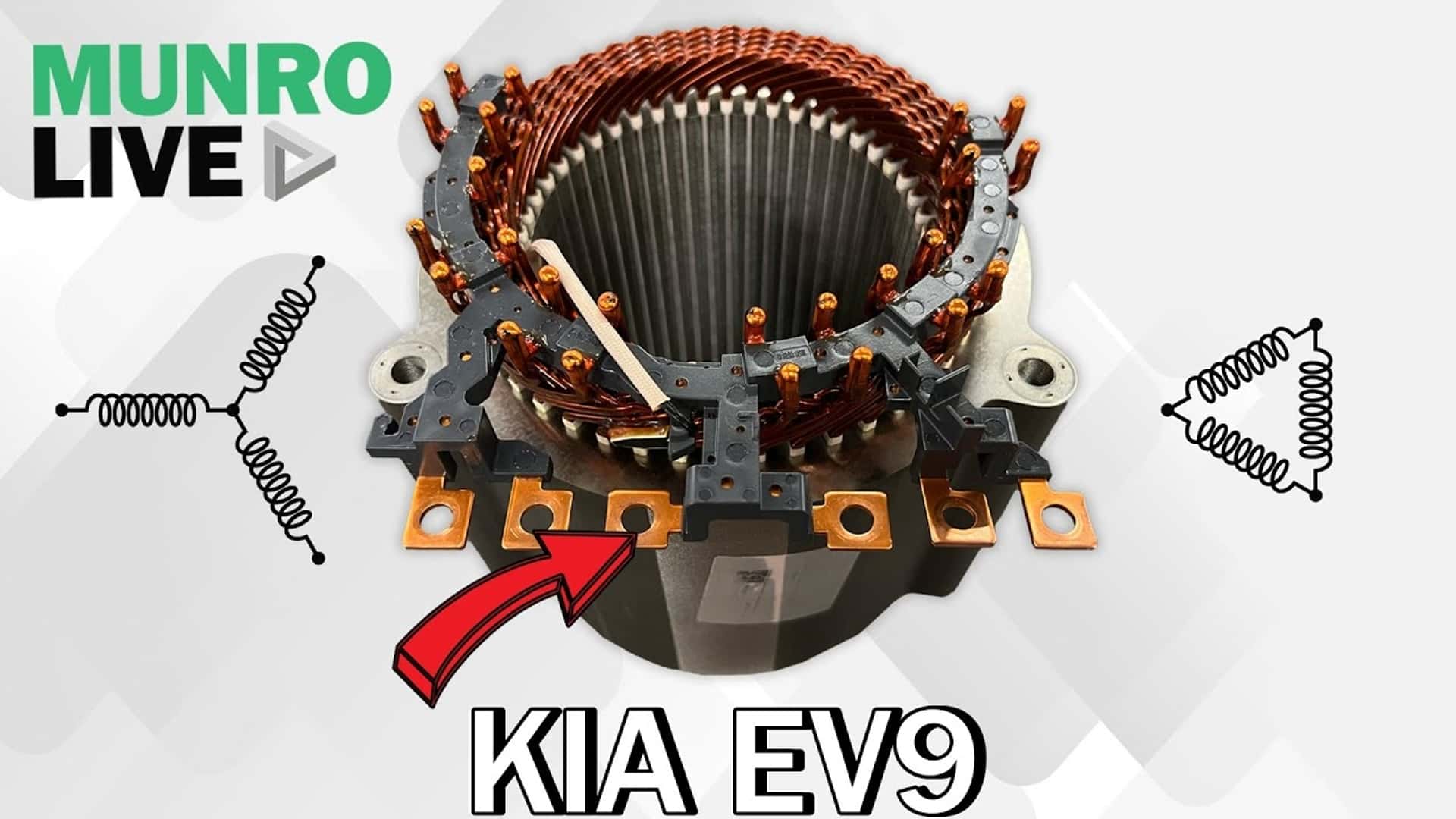
THE KIA EV9 HAS MOTORS UNLIKE ANY OTHER EV
These unique dual-stage motors maximize low-speed efficiency or deliver more power while improving efficiency at higher speeds.
- The Kia EV9 has what could be the industry's first dual-stage motor.
- It has two modes: one favors low-speed efficiency by limiting power draw, and one provides more power and high-speed efficiency.
Thanks to the broad spread of torque across their rev range, electric vehicles don't need multi-gear transmissions like combustion cars. However, finding the perfect balance between low-speed tractability, strong acceleration, and high-speed efficiency is tricky. Manufacturers have to compromise in at least one of these areas.
That’s why Porsche installed a two-speed gearbox for the Taycan’s rear motor, improving both off-the-line acceleration and high-speed efficiency but adding extra complexity and cost. Kia has a very different approach to this that doesn’t need multiple gear ratios, and it’s a clever engineering solution that debuted in the firm’s largest electric vehicle, the EV9 SUV.
Munro Live is tearing down an EV9 and examining the inner workings of its motor, discovering several innovations that other electric Kias lack. The big news is that it is a dual-stage motor, which can switch from a Wye into a Delta configuration on the fly, giving the unit two very distinct characters.
More Kia EV Stories
- Kia EV2: Everything We Know
- Kia’s Futuristic Electric Vans Have Arrived In Europe
- Kia Will Slash The Price Of A New EV6 Or EV9 If You Drive A Tesla
- 2025 Kia EV3 First Drive: An Affordable Electric Breakthrough
Wye and Delta refer to how the ends of the motor’s three windings are connected: joined at the end or coming together into a single point. When the motor is in wye mode, it limits how much power is being used and thus improves efficiency. Switching to Delta gives you better power and high-speed efficiency, essentially unlocking the motor’s full potential but also making it more efficient at high speeds compared to wye mode.
These principles aren’t new to EVs, but the EV9 drive unit's ability to switch from one mode to the other on the fly makes it special. Kia has somehow managed this, and it will probably make its way into its other EVs.
Opening up the motor, which is built by Vitesco, immediately reveals a noticeable difference: the stator now has six connections instead of the usual four, like in a Hyundai Ioniq 5. This innovation shows how advanced Hyundai-Kia’s EV technology is and how the company is trying to stay ahead.
Most of the group’s EVs run at 800 volts rather than the more common 400 volts. Its vehicles built on the E-GMP platform actually use their rear motor to step up the voltage into the 800-volt range. This eliminates the need for a separate inductor, and the motor's coils serve the same purpose instead.
2024-09-18T18:31:52Z dg43tfdfdgfd